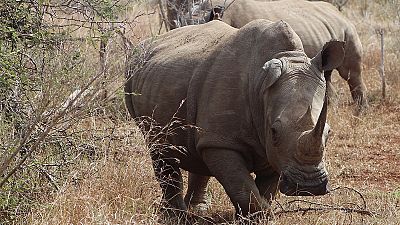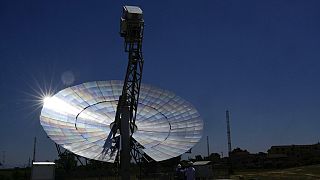Animal rights
The Zoological Society London, ZSL, a conservationist society has developed a new camera called Instant Detect to help in the fight against poaching and monitor endangered species.
The device was developed in partnership with other companies including Seven Technologies Group, which specialises in security technology and helped train rangers on conservation sites on how best to use Instant Detect devices.
According to the charity group, in the last 40 years, 95 percent of rhinoceroses have been poached and more than 100,000 African elephants from 2011-2014 have been illegally killed.
Instant Detect is a camera trap system that uses satellite technology to send images from anywhere in the world,
“It’s a camera that we would deploy in the wild, it has to be quite sturdy and it often uses motion triggers, so it will have a passive infrared sensor to detect heat changes, so as an animal or a person walks past an image will be captured, and it’s just a great way to get an insight into the wild that you wouldn’t be able to do if you were a person,” according to ZSL Conservation Technology Unit Project Manager, Louise Hartley.
The satellite node uses a Raspberry Pi computer to send the images via the Iridium satellite network, which is a satellite constellation providing voice and data coverage to satellite phones, pagers and other integrated transceivers.
According to Hartley, it has two main uses – monitoring and catching poachers.
“We have a deployment in Antarctica to monitor penguins, so we’re getting images back daily to look at the penguin behaviour and also look at environmental change in that area,” she said.
“We’re also using it for anti-poaching purposes to improve security within protected areas. So an alert, an image, would be sent to an operations room and then rangers can then react accordingly to that alert,” she added.
If an intruder enters a protected area, the camera picks that up and sends an alert. It also has magnetic sensors that can pick up cars, guns and even knives, also triggering the alert to local rangers.
Other anti-poaching technologies have come to the fore recently, including the Real-Time Anti-Poaching Intelligence Device (RAPID) developed by conservation organisation Protect with support from the Humane Society International.
DNA analysis, acoustic traps, thermal imaging and improving analytics and mapping are all contributing to the fight against poaching as well. ZSL hopes that Instant Detect could be a crucial addition to that growing arsenal, in what remains a battle with high costs.














Go to video
In South Africa, where the buffaloes roam is sometimes a problem
Go to video
AI disinformation, “biggest global threat in the short term”
Go to video
Dog meat production and sales will soon become illegal in South Korea
02:44
Nigeria: Ram fighting continues without regulation despite animal rights concerns
02:15
10 lions killed in Kenya's Amboseli National Park
Go to video
Sudan: Khartoum zoo animals caught in the crossfire